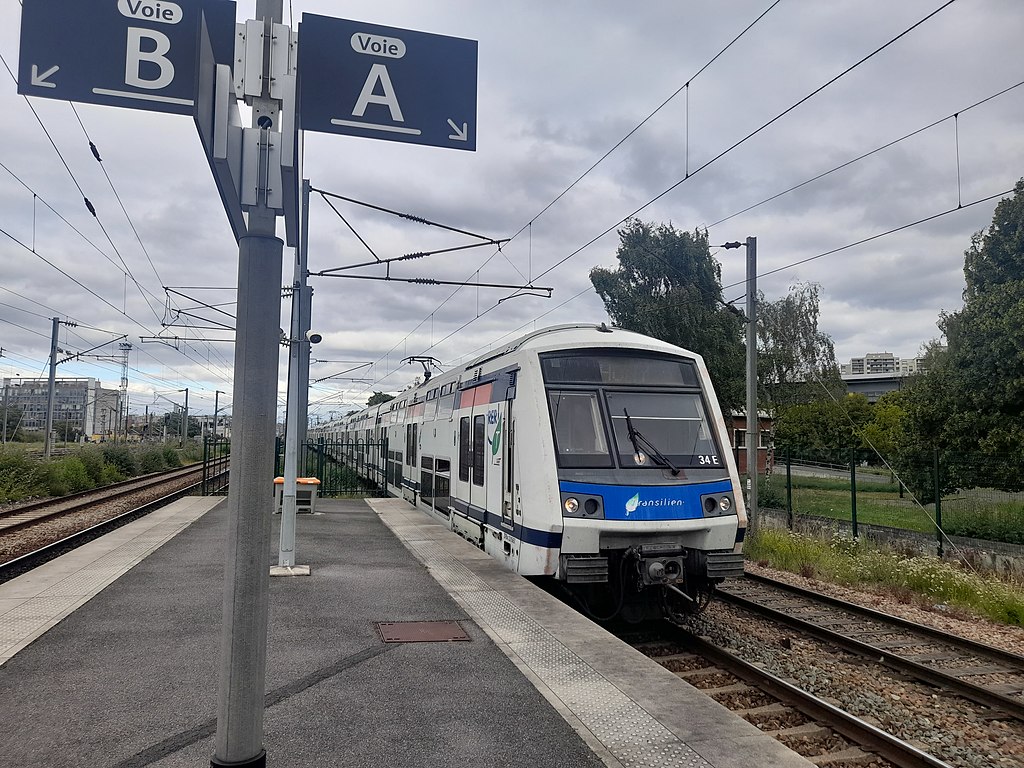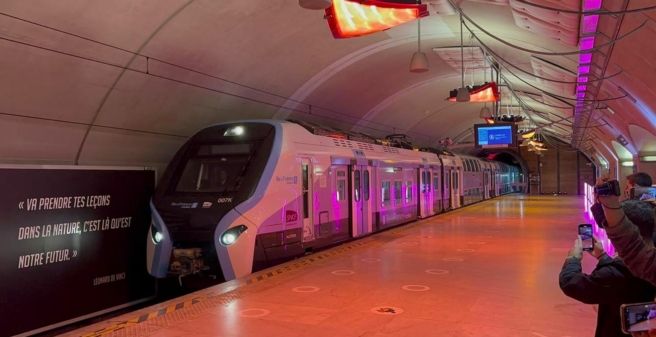
On Monday 13 November 2023, Ile-de-France Mobilités, SNCF Voyageurs and Alstom inaugurated the RER NG, the “New Generation RER”, at Haussmann Saint-Lazare station in Paris, in the presence of elected representatives and passengers.
“It is with immense pride that we are today celebrating the commissioning of the RER NG commuter train on Line E. It is a very special moment in the life of a project when a train meets its first passengers. It is also a source of pride for all Alstom employees, as this is the pinpoint of a great deal of hard work from each and every one of them, serving a major project for the Île-de-France region and its inhabitants,” said Henri Poupart-Lafarge, Chairman and CEO of Alstom.
RER NG: comfortable and efficient
The arrival of the RER NG commuter train is an important milestone in the policy pursued by Île-de-France Mobilités to upgrade all the rolling stock on the Île-de-France railway network. RER lines D and E on which the RER NG fleet will operate, counts for 1.23 million passengers per day.
The train is a conventional train set with six or seven cars, six of which are double-decker, while the two end cars are single-decker. This maximises passenger capacity.
The trains consist of 20 metre long single-decker end cars and four to five 18 metre long double-decker cars. The end cars and the two adjoining centre cars are powered on all four axles, while the remaining centre cars are unpowered. Each car has two double sliding doors on each side. They are generally 1.95 metres wide, but one door in each end carriage is only 1.3 metres wide. The trains are equipped with the CBTC signalling system NExTEO.
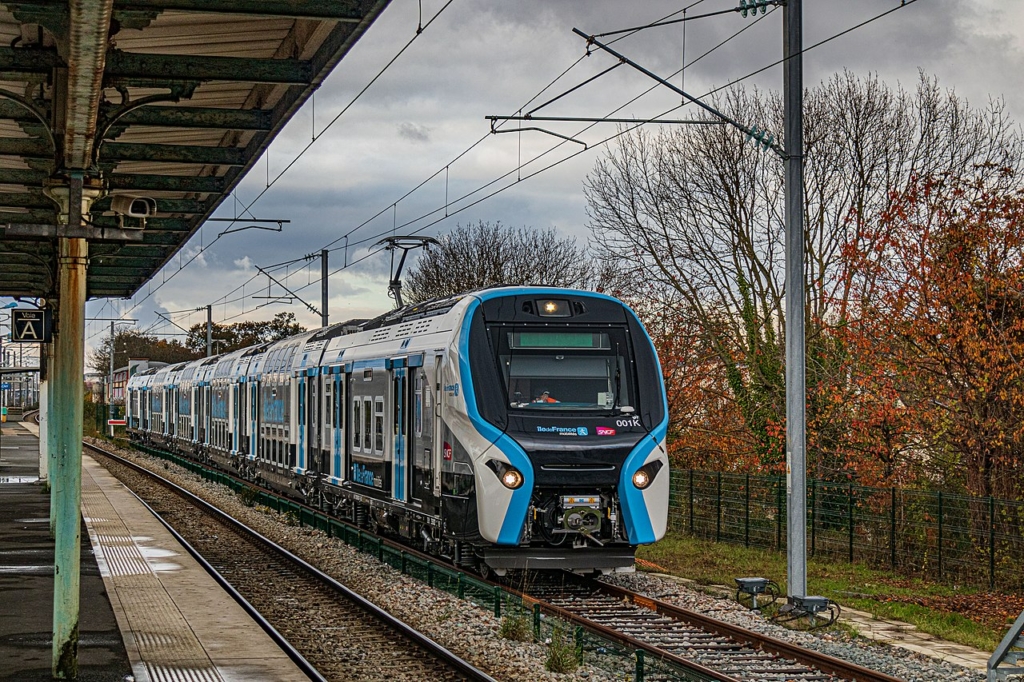
The RER NG trains are fully accessible with wide car gangways. The trains will be suitable for different journey times thanks to an adapted interior design. For short journeys lasting less than five minutes, standing room is provided in the single-level area at the doors. For journeys lasting less than 20 minutes, there is a mixture of standing and seating in the lower deck of the centre carriages. Dense seating is planned on the upper deck for longer journeys.
Final assembly will take place in Valenciennes and at the former Bombardier plant in Crespin. The two plants have already worked together in the past, for example on TGV double-decker coaches and other SNCF multiple units. The car bodies are manufactured at the Alstom plant in Česká Lípa in the Czech Republic.
Technical parameters:
- Class: Z 58000 / Z 58500
- Axle configuration(s): Bo′Bo′+Bo′Bo′+2′2′+2′2′(+2′2′)+Bo′Bo′+Bo′Bo′
- Motirisation: 66,7 % / 57,1 %
- Vehicle length(s): 112/ 130 m
- Width: 2990 mm
- Maximum speed: 140 km/h
- Power: 4000 kW (DC-Betrieb), 5000 kW (AC-Betrieb)
- OHL voltage: 1,5 kV = / 25 kV/50 Hz ~
- Number of seats: 501/ 604
This new RER commuter train will contribute to a lasting improvement in travel conditions for the hundreds of thousands of commuters who use RER lines E and D every day:
The train has been designed specifically at the request of Île-de-France Mobilités specifically for the Île-de-France region and its 9 million daily commuters.
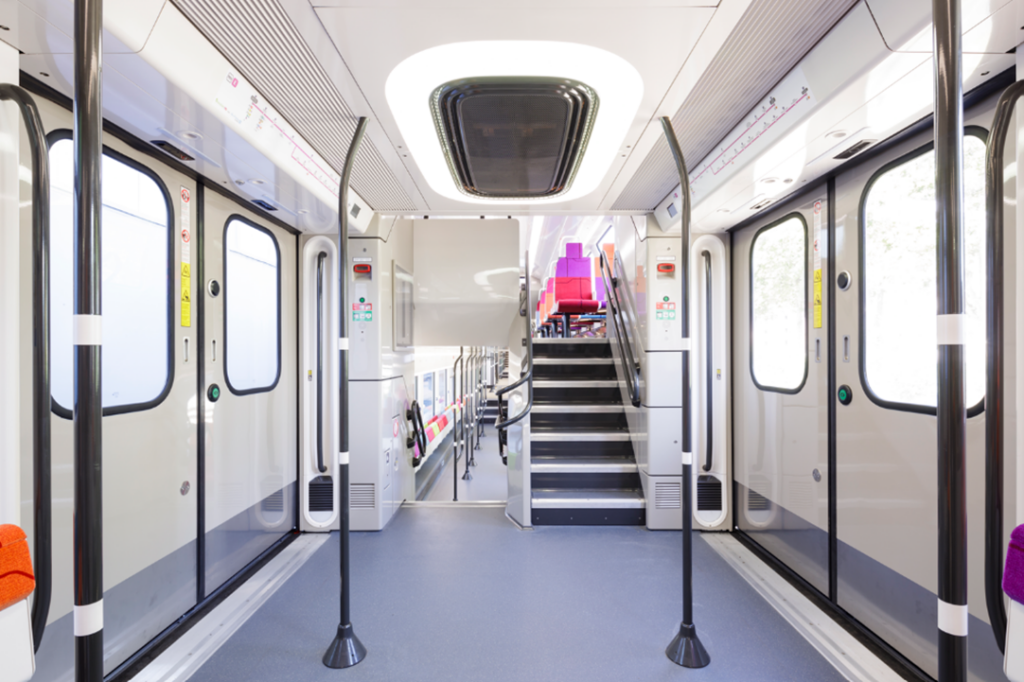
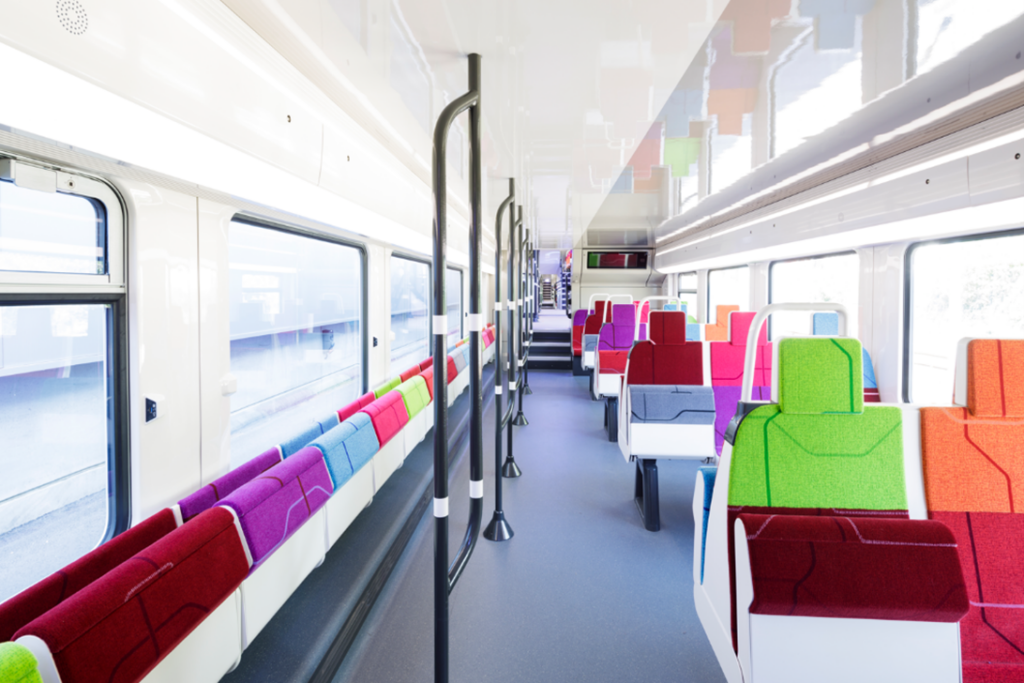
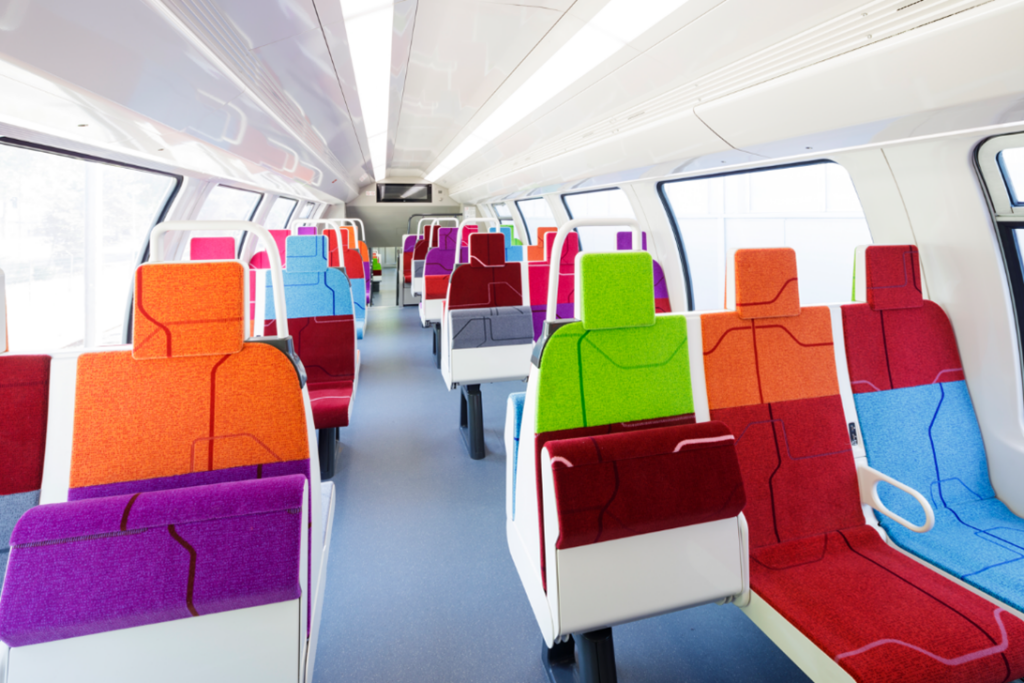
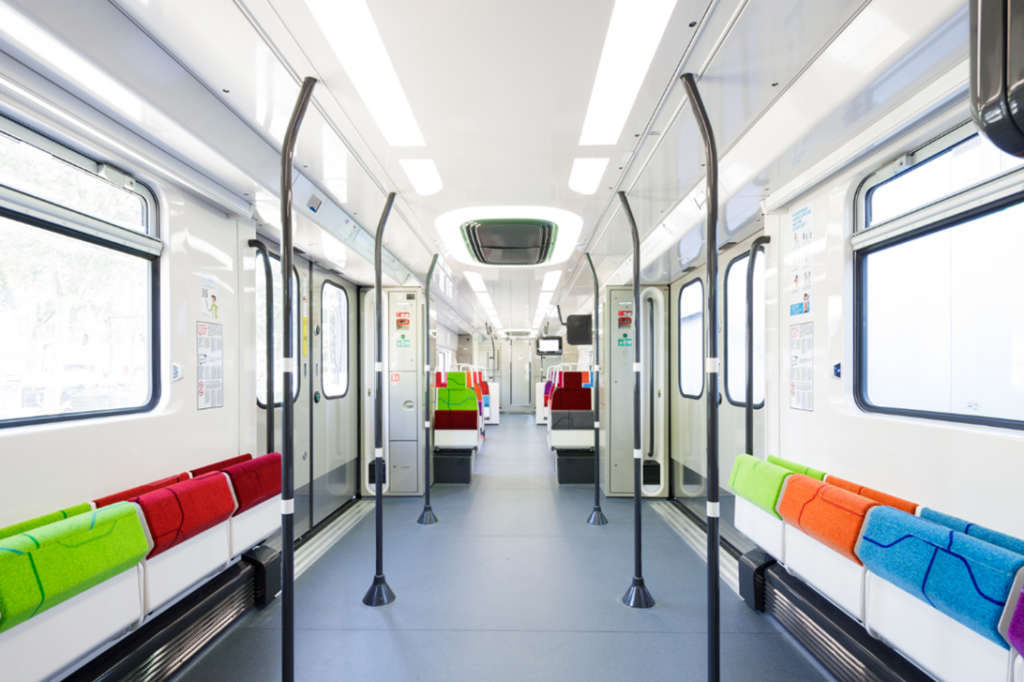
This train has been designed, both in terms of its overall architecture and its interior design, to optimise capacity and passenger flows. Thanks to its entirely open architecture and wide doors, it allows passengers to enter and leave with ease and offers distinct travel areas.
The RER NG also offers a high level of comfort: With air conditioning, ergonomic seats, LED lighting adapted to the time of travel (day/night/station stops), USB sockets and numerous information screens, the RER NG enhances the passenger experience.
In each of the end cars, platforms provide direct and rapid access for passengers in wheelchairs to adapted areas.
Furthermore, the RER NG offers first-rate acceleration and braking performance to optimise station stopping times, train frequency, and therefore the line’s capacity and regularity. It will also incorporate the brand new NExTEO train automation, control and supervision system, which will further increase train frequency.
An industrial and human adventure
The RER NG is the result of close collaboration between the Alstom and the teams of former Bombardier Transportation, SNCF and Île-de-France Mobilités teams throughout the project.
This inauguration is a major milestone for all 900 Alstom employees who are working on this project on a daily basis, and a demonstration of their specific know-how. At the start of the project, they were more than 2,000.
Designed and assembled at Alstom’s Valenciennes-Petite Forêt and Crespin sites in Hauts-de-France, a total of 9 of Alstom’s 16 French sites are contributing to the project, with the participation of sites manufacturing components.
Delivery and operation
The RER NG commuter train is gradually being introduced on the RER E line. This gradual arrival will ensure that the train becomes more reliable before being deployed on the whole RER E line, including the new extension to Nanterre. It will then be deployed on the RER D line at the end of 2024.
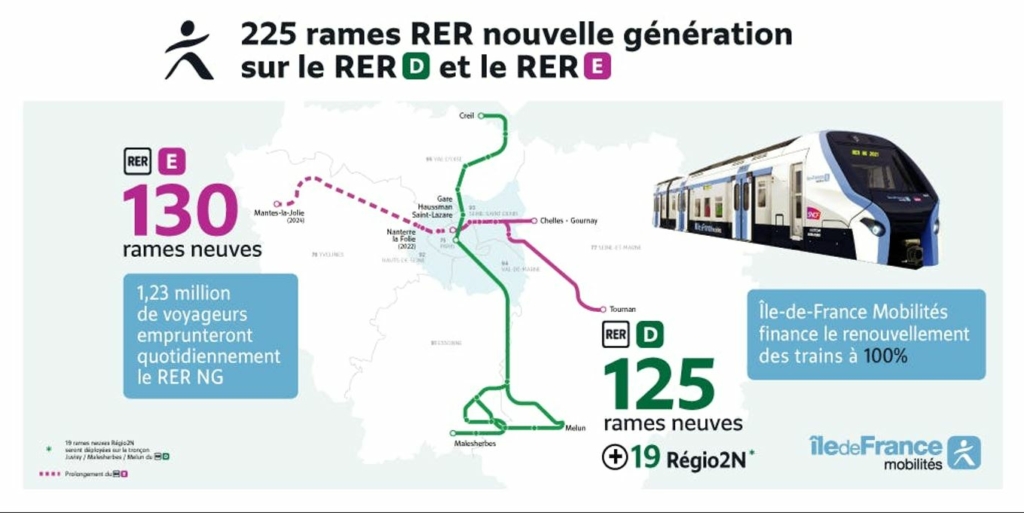
The RER NG are to be operated in double traction. The shorter Z 58000 trains are intended for the western extension of the RER E to La Défense and as a replacement for the existing Z 22500 Eole fleet (also known as MI 2N “Eole” or MI 2N). The longer Z 58500s will be operated on the RER D. In 2017, 56 six-car and 15 seven-car trains were firmly ordered, followed by an order for 60 trains worth around one billion euros in 2023. A total of up to 255 trains are to be delivered. The first trains have been tested and validated from 2019, followed by series production from 2021 – 2022.
